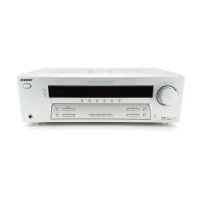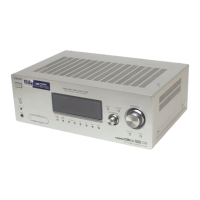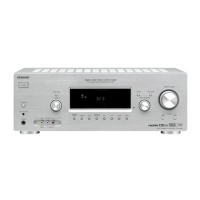Do you have a question about the Sony HT-DDW660 and is the answer not in the manual?
Section to record model and serial numbers for future reference.
Critical safety instructions, FCC compliance, and environmental considerations.
Details on manual scope, model HT-DDW660, and area-specific features.
Instructions for connecting audio and video sources like DVD players and VCRs.
Guide for connecting AM loop and FM wire antennas for radio reception.
Steps for connecting the 5.1 channel speaker system to the receiver.
How to connect the AC power cord and perform the initial receiver setup or reset.
Configuring speaker distances and positions for optimal surround sound.
Using the test tone to set speaker output levels for balanced sound.
How to choose the active audio/video source connected to the receiver.
Instructions for tuning and listening to AM and FM radio broadcasts.
Explains direct tuning, automatic tuning, and presetting radio stations.
How to change displayed information and adjust screen brightness.
Explanation of various indicators and symbols displayed on the receiver screen.
Using the receiver for basic stereo output with front speakers and subwoofer.
Automatically detects and decodes various audio signal formats for optimal playback.
Selecting decoding modes for 2-channel sources like Dolby Pro Logic.
Choosing pre-programmed sound fields for movie playback to enhance audio.
Selecting sound fields optimized for music genres like classical, jazz, or live concerts.
Configuring how the receiver selects digital audio inputs like coaxial or optical.
Adjusting speaker levels and balance within selected sound fields.
Adjusting dynamic range for low-volume listening and the intensity of surround effects.
Modifying bass/treble and accessing receiver settings like digital input priority.
Selecting languages for digital broadcasts and assigning names to inputs/presets.
Assigning custom names to radio presets and input sources for easier identification.
Setting the receiver to automatically turn off after a specified period.
Visual guide to remote buttons and their functions for operating the receiver.
Guidelines for safe operation, heat buildup, placement, and cleaning the receiver.
List of all items included in the product package with the receiver.
Section to record model and serial numbers for future reference.
Critical safety instructions, FCC compliance, and environmental considerations.
Details on manual scope, model HT-DDW660, and area-specific features.
Instructions for connecting audio and video sources like DVD players and VCRs.
Guide for connecting AM loop and FM wire antennas for radio reception.
Steps for connecting the 5.1 channel speaker system to the receiver.
How to connect the AC power cord and perform the initial receiver setup or reset.
Configuring speaker distances and positions for optimal surround sound.
Using the test tone to set speaker output levels for balanced sound.
How to choose the active audio/video source connected to the receiver.
Instructions for tuning and listening to AM and FM radio broadcasts.
Explains direct tuning, automatic tuning, and presetting radio stations.
How to change displayed information and adjust screen brightness.
Explanation of various indicators and symbols displayed on the receiver screen.
Using the receiver for basic stereo output with front speakers and subwoofer.
Automatically detects and decodes various audio signal formats for optimal playback.
Selecting decoding modes for 2-channel sources like Dolby Pro Logic.
Choosing pre-programmed sound fields for movie playback to enhance audio.
Selecting sound fields optimized for music genres like classical, jazz, or live concerts.
Configuring how the receiver selects digital audio inputs like coaxial or optical.
Adjusting speaker levels and balance within selected sound fields.
Adjusting dynamic range for low-volume listening and the intensity of surround effects.
Modifying bass/treble and accessing receiver settings like digital input priority.
Selecting languages for digital broadcasts and assigning names to inputs/presets.
Assigning custom names to radio presets and input sources for easier identification.
Setting the receiver to automatically turn off after a specified period.
Visual guide to remote buttons and their functions for operating the receiver.
Guidelines for safe operation, heat buildup, placement, and cleaning the receiver.
List of all items included in the product package with the receiver.
| Brand | Sony |
|---|---|
| Model | HT-DDW660 |
| Category | Home Theater System |
| Language | English |












